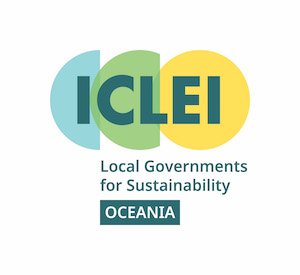Mainstreaming nature into urban planning: New cities tool
In celebration of International Day for Biological Diversity, CitiesWithNature - a global knowledge sharing platform launched by ICLEI, IUCN and The Nature Conservancy - has a new tool to help integrate nature into cities. The Nature Pathway on CitiesWithNature is a collection of guidance, tools and inspirational examples that help local and regional governments to share their work on nature and learn about best practices and tools.
The Nature Pathway guides cities on a journey of exploration and inspiration, where they can share with and learn from other cities. Along this journey, cities can show their commitments and ambitions towards incorporating nature’s benefits and nature-based solutions into city policy, planning and decision-making processes and implementation.
The CitiesWithNature online platform has been endorsed by the Secretariat of the Convention on Biological Diversity (SCBD) as the official mechanism to coordinate local and subnational ambitions and commitments towards global efforts in halting biodiversity loss and protecting our natural world.
Local leaders are already stepping up. Ashok Sridharan, Mayor of Bonn, Germany, and President of ICLEI is encouraging local leaders to join the movement: “The scientific evidence on the biodiversity crisis is alarming and taking action is an imperative. Local and regional governments understand best how biodiversity in our cities protects lives and livelihoods. They can and should play a major role in protecting and restoring our natural world. The CitiesWithNature platform provides the strongest way forward for cities to change our current trajectory, and that‘s why I’m asking my fellow city leaders to join the city of Bonn in becoming a part of CitiesWithNature.”
The Nature Pathway is based on an ICLEI methodology with three main phases: Analyze, Act and Accelerate. Each of these phases is divided into steps and each step is accompanied by a rich collection of information including guidance, tools, ideas and examples.
Cities can learn from the successes of peers and share their own work on nature through the platform, adding to a growing body of examples, tools and data on how cities are incorporating nature into their urban landscapes, plans and policies.
For example, step one asks cities to commit to and mobilize towards becoming a city with nature and offers resources on how to develop a strategy and action plan for nature in your city. The City of Melbourne has shared its ‘Nature in the City Strategy’ as an example of making a commitment to nature.
Every city has different challenges and priorities, and the diversity of the Nature Pathway can help all cities take the next step. Each city can meet its specific nature-based needs, but can also contribute to a global movement of by sharing experiences and tools that assist other cities in achieving their goals.
City residents can keep up with what their city is doing and sharing by viewing their city’s profile on CitiesWithNature, which is a summary of a city's commitment and work in this area, and a celebration of their natural assets."
Through this journey, cities can contribute to global goals such as the objectives of the Convention on Biological Diversity’s Strategic Plan for Biodiversity (2011-2020), the Aichi Biodiversity Targets and the Sustainable Development Goals.
The CitiesWithNature Registry and Nature Pathway have been produced as part of the INTERACT-Bio project. This project is supported by the German Federal Ministry for the Environment, Nature Conservation and Nuclear Safety (BMU) through the International Climate Initiative (IKI).
https://iclei.org/en/media/new-free-tool-helps-cities-mainstream-nature-into-urban-planning

